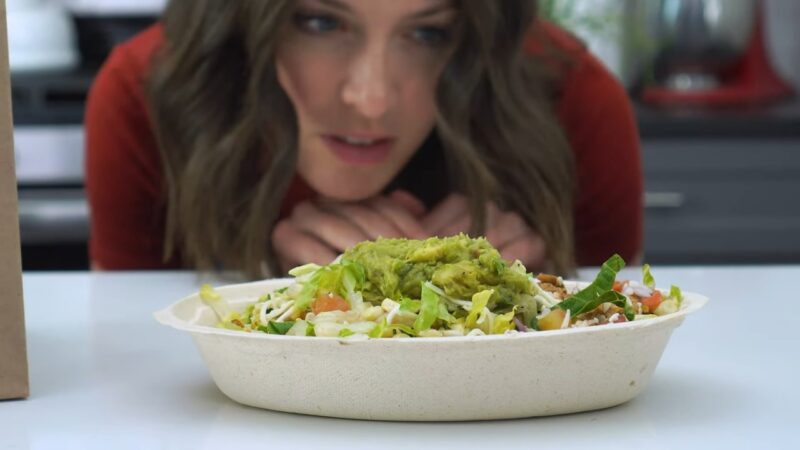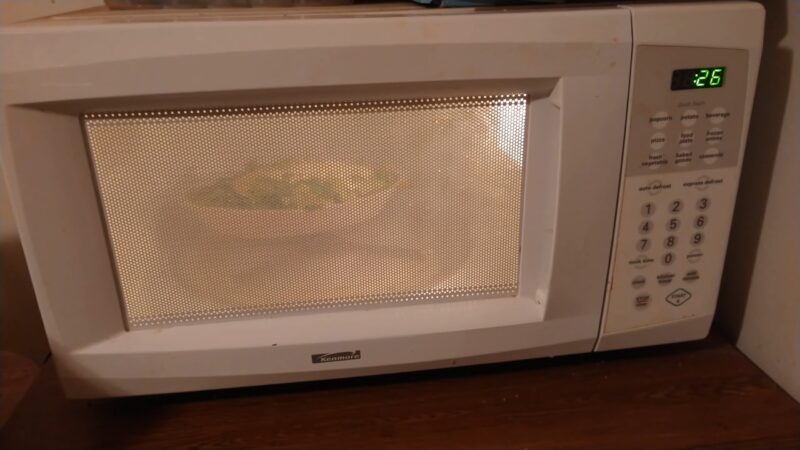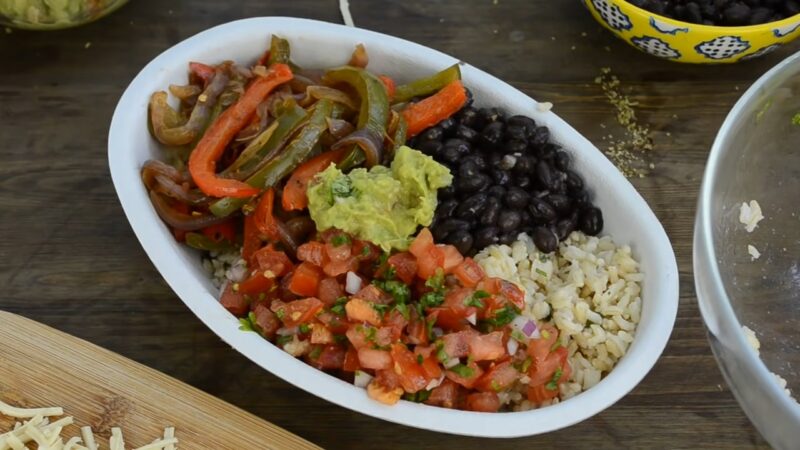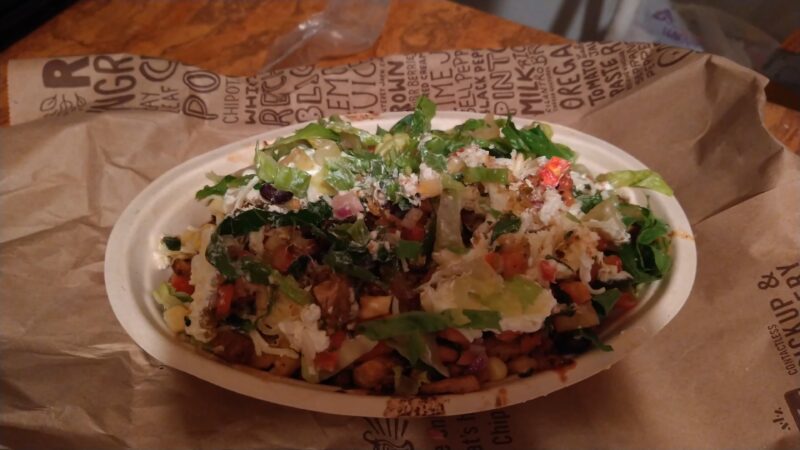Chipotle Mexican Grill, a beloved fast-food chain in the United States, offers customizable meals with a focus on fresh ingredients and sustainable practices. One of the most popular menu items is the Chipotle bowl, which allows customers to enjoy their favorite burrito ingredients without the tortilla.
But what happens when you have leftovers and need to reheat your meal? Are Chipotle bowls microwave safe? This question has puzzled many, as conflicting information circulates on the internet. In this comprehensive blog post, we will uncover the truth behind microwaving Chipotle bowls, explore the materials they are made from, and offer guidance on safely reheating your delicious meal.
The Composition of These Bowls

Before we dive into the safety of microwaving Chipotle bowls, let’s examine their composition. Chipotle is known for its commitment to sustainable practices, so it is no surprise that their bowls are made from eco-friendly materials. The bowls are primarily composed of a mixture of compostable materials, including bagasse and wheat straw.
Bagasse: A Sustainable Choice
Bagasse is a byproduct of the sugarcane production process. After the juice is extracted from the sugarcane, the remaining fibrous material is called bagasse. It is an abundant and renewable resource that is often used as a biofuel, but it also has applications in producing sustainable packaging materials.
Wheat Straw: Another Eco-Friendly Option
Wheat straw is the leftover stalks from wheat plants after the grains have been harvested. Traditionally, it was considered a waste product, but now it’s being used as a valuable resource for producing sustainable products, including compostable packaging materials like Chipotle’s bowls.
Are These Bowls Microwave Safe?

Now that we know what Chipotle bowls are made of, we can address the main question: are they microwave safe? The answer is yes – but with some caveats.
Microwave Safety of Chipotle Bowls
While the materials used in Chipotle bowls are indeed microwave safe, there are certain guidelines you should follow to ensure the best results. The bowls are designed to withstand temperatures up to 200°F (93°C), which means they can handle the heat generated by a microwave. However, it’s crucial to avoid overheating the bowl, as this may cause it to lose its shape and potentially leak.
The Caveats: How to Microwave Chipotle Bowls Safely
To safely microwave your Chipotle bowl, follow these guidelines:
- Remove the lid: The plastic lid is not microwave safe and may warp or release harmful chemicals if exposed to high heat. Always remove the lid before microwaving your bowl.
- Use a microwave-safe cover: To prevent splatters and spills, cover your bowl with a microwave-safe cover or a microwave-safe plate.
- Reheat in short intervals: To prevent overheating, reheat your bowl in 30-second intervals, stirring the contents between each interval to ensure even heating.
- Don’t overfill the bowl: If you’ve customized your bowl with extra ingredients, it may be too full for safe microwaving. Transfer some of the contents to a microwave-safe dish to avoid spills and ensure even heating.
Alternative Methods for Reheating

If you’re concerned about microwaving your Chipotle bowl or simply prefer another reheating method, here are some alternatives:
Stovetop Reheating
One of the best methods for reheating your Chipotle bowl is using the stovetop. Transfer the contents of the bowl to a non-stick pan or skillet and heat over medium heat, stirring occasionally. This method allows you to retain the texture and flavor of the ingredients, ensuring a delicious reheated meal. Remember to use a separate pan for heating any cold toppings, such as sour cream or guacamole, as they should not be heated with the rest of the bowl.
Oven Reheating
Another alternative is using your oven to reheat the Chipotle bowl. Preheat your oven to 350°F (175°C) and transfer the contents of the bowl to an oven-safe dish. Cover the dish with aluminum foil and bake for approximately 15-20 minutes or until the contents are heated through. As with stovetop reheating, any cold toppings should be set aside and not heated in the oven.
Steaming
Steaming is a great option for reheating the rice and vegetables in your Chipotle bowl without drying them out. Place the rice and vegetables in a steamer basket and steam for a few minutes until heated through. Reheat the protein separately using one of the other methods listed above.
The Environmental Impact of Chipotle Bowls

In addition to the convenience and microwave safety of Chipotle bowls, it’s essential to consider the environmental implications of these packaging materials. As previously mentioned, Chipotle bowls are made from bagasse and wheat straw, which are both compostable materials. But what exactly does that mean for our environment?
Benefits of Compostable Packaging
Compostable packaging materials like bagasse and wheat straw break down naturally over time, converting into nutrient-rich compost that can be used to fertilize the soil. This offers numerous environmental benefits, such as:
- Reduced landfill waste: Compostable materials reduce the volume of waste that ends up in landfills, which can help minimize the environmental impact of waste disposal.
- Lower carbon footprint: The production of compostable materials typically has a lower carbon footprint than traditional plastic packaging, as it uses fewer resources and generates fewer greenhouse gas emissions.
- Support for sustainable agriculture: By using byproducts from agricultural production (sugarcane and wheat), Chipotle is supporting sustainable agriculture and helping to create a circular economy.
Composting Your Chipotle Bowl
To fully realize the environmental benefits of Chipotle’s compostable bowls, it’s important to dispose of them correctly. Here are some tips for composting your Chipotle bowl at home or using public composting facilities:
- At home: If you have a home composting system, you can add your Chipotle bowl directly to your compost pile or bin. Be sure to break the bowl into smaller pieces to speed up the decomposition process.
- Public composting facilities: If you don’t have a home composting system, check to see if there are any public composting facilities in your area where you can drop off your bowl. Many cities offer curbside composting services or have designated drop-off locations for compostable materials.
Chipotle’s Commitment to Sustainability
Chipotle’s use of compostable bowls is just one example of the company’s dedication to environmental sustainability.
Sourcing Responsibly
Chipotle is committed to sourcing ingredients from suppliers that prioritize sustainable farming practices. This includes sourcing meats from animals raised without antibiotics or added hormones and using organic, non-GMO ingredients whenever possible.
Reducing Energy Consumption
Chipotle has taken steps to reduce its energy consumption in its restaurants, using energy-efficient appliances, LED lighting, and implementing energy management systems to monitor and control energy usage.
Waste Reduction Initiatives
In addition to its compostable bowls, Chipotle works to reduce waste in other areas, such as by recycling used cooking oil, cardboard, and plastic and by donating leftover food to local food banks and shelters.
Final Words
Chipotle bowls are indeed microwave safe, as they are made from compostable materials like bagasse and wheat straw. However, to ensure the safety and quality of your reheated meal, it’s essential to follow the guidelines provided in this blog post.
Alternatively, you can reheat your bowl using the stovetop, oven, or steaming methods. No matter which method you choose, taking the necessary precautions will help you enjoy a delicious and satisfying meal – even as leftovers. So, go ahead and savor your Chipotle bowl with confidence, knowing you can reheat it safely and enjoy all of its deliciousness once more.







